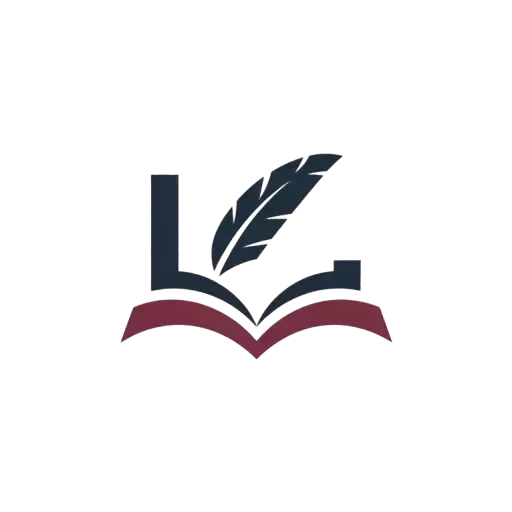Formalism and new criticism were influential literary theories that emerged in the early 20th century. They shifted focus toward the textual artistry of works and close reading aesthetic elements. In this in-depth guide, we’ll explore the tenets of formalism and new criticism, major thinkers, key concepts like “defamiliarization,” and the lasting impacts these approaches had on literary analysis.
Table of Contents
What is Formalism?
Formalism refers to a school of literary theory that analyzes literature through its formal elements and devices. It focuses intensely on the language, structure, tone, imagery, rhyme schemes, meter, and other compositional tools used in texts.
Formalism emerged in Russia in the 1920s. Russian theorists like Victor Shklovsky developed the concept of “defamiliarization” or “making strange” – using literary language in innovative ways to shift readers’ perceptions. The “Formalist School” in Russia included thinkers like Vladimir Propp, Boris Eichenbaum, and Roman Jakobson.
Core beliefs in formalist theory are:
- The form of a work is itself meaningful – not just the narrative or themes.
- Poetic function transcends everyday communicative language through aesthetic expression.
- Literary evolution happens through disruption of familiar forms. New structures and stylistic devices refresh perception.
- Technical mastery and interplay of formal elements are qualities marking great literature.
So rather than interpreting symbolism or biography, formalists “close read” to excavate the complex interrelation of a text’s formal elements. The focus rests on artistic craft within the work itself.
Principles of New Criticism
New criticism shared formalism’s emphasis on close reading and the text itself versus external context. This school of thought took shape in essays and books by T.S. Eliot, William Empson, I.A. Richards, and Cleanth Brooks in the 1920s-40s. They promoted “objective” textual analysis and paying attention to poetic devices.
Some defining traits of new criticism include:
- “Close reading” examining rhetorical tools like irony, paradox, tension, and ambiguity
- Focus on the text as a self-contained aesthetic object
- Downplaying authorial intent and historical/cultural contexts
- Interest in textual unity, organicism, and reconciliation of opposites
- View of good literature as complex, indirect, and ambiguous

New critics aimed to develop a detailed science for analyzing literariness and formal techniques. They spurned impressionistic criticism for exacting attention to textual construction.
Key Concepts and Common Techniques
Formalism and new criticism concentrated on certain concepts and interpretive strategies:
Defamiliarization – Formalist idea that art freshens perception by disrupting familiar forms and language. Forced readers to see ordinary things in new ways.
Tension – New critics saw paradox, irony, and unresolved opposites as creating tension and complexity within texts.
Organicism – Literature as a unified whole with interconnected formal parts, like an organism. The text is a self-sufficient aesthetic system.
Heresy of Paraphrase – New critical view that a text should not be paraphrased, as its artistic complexity transcends reductive summaries.
Textual unity – Assuming the work is a harmonious, self-contained whole rather than chaotic accumulation of parts.
Close reading – Meticulous analysis and explication de texte of diction, syntax, rhyme, meter, structure, ambiguity, irony, and imagery within the text.
These concepts guided close textual analysis emphasizing artfulness over historicity or authorial intent.
Major Figures and Seminal Texts
Several key scholars helped shape formalism and the new critical canon:
Victor Shklovsky – Russian formalist whose concept of defamiliarization and focus on literary devices influenced later formal analysis.
Art as Technique – Shklovsky’s seminal 1917 essay outlines the principles of Russian formalism.
T.S. Eliot – High modernist poet and essayist who helped launch the new critical school. Eliot emphasized literary tradition, order, and objective analysis.
The Sacred Wood – Eliot’s collection of essays on poetic masterpieces and principles of new criticism.
I.A. Richards – English literary critic who pioneered close reading and elucidated the cognitive effects of poetry.
Practical Criticism – Richards’ foundational 1929 book demonstrated close reading of anonymous poems.
Cleanth Brooks – American scholar known for technical literary analysis seeking textual unity.
The Well Wrought Urn – Brooks’ classic explication de texte applying new criticism to poems.
These thinkers exemplified formalism and new criticism’s founding concepts and methods. Their attentiveness to form and technique left a lasting impact.
Reception and Critique
Formalism and new criticism dominated literary studies for much of the mid-20th century. Their impact was far-reaching and long-lasting.
However, these approaches also drew criticism from multiple corners. Marxists attacked them as overly apolitical and divorced from social realities. Critics argued close readings universalized diverse works and imposed arbitrary unity. And poststructuralists questioned assumptions of coherence and unambiguous meaning.
Challenges to formalism and new criticism included:
- Lack of political/social contextualization in interpreting texts
- Tendency to abstract literary works from messy realities
- Illusion of textual unity and fixation on reconciliation
- Naïve assumptions about stability of meaning
- Eurocentric focus on a narrow male-dominated canon
Today these theories are seen as foundational, but limited in scope. Their techniques remain relevant for understanding a text’s inner workings. Yet they should be applied alongside historical and political analysis.
Enduring Impact on Literary Study
Despite valid critiques, formalism and new criticism left an indelible impact on:
- Close reading practices seeking precision and complexity
- Appreciation for literary form, technique and craftsmanship
- Concepts like irony, paradox, tension and ambiguity as hallmarks of artistry
- High modernist principles valuing difficulty, allusion and obscured meaning
- The development of practical criticism in Anglo-American literary analysis
- Canon formation emphasizing metaphysical poets, high modernists and the “harmonious whole”
These approaches made vital contributions to the rhetorical analysis of texts. Their focus on artistic form and rhetorical devices remains fundamental, though no longer an exclusive approach.
Conclusion
From defamiliarization to the heresy of paraphrase, formalism and new criticism enhanced understanding of literature’s complexity. They developed vital interpretive tools and close reading strategies still employed today.
However, their lack of extrinsic analysis highlighted the need for more politically attuned and racially inclusive approaches. Literature’s evolving landscape demands diverse perspectives.
In balancing textual aesthetics with cultural insight, perhaps the solution is not “either/or” but “both/and” – appreciating formal artistry while probing context. Integrating literary traditions and radical innovation, text and world, continues to challenge and inspire readers.



2 Comments
Pingback: Seven Point Story Structure: Beginner's Guide - LitGram by MukeshRishit
Pingback: Symbolism in William Blake's Poetry - LitGram by MukeshRishit